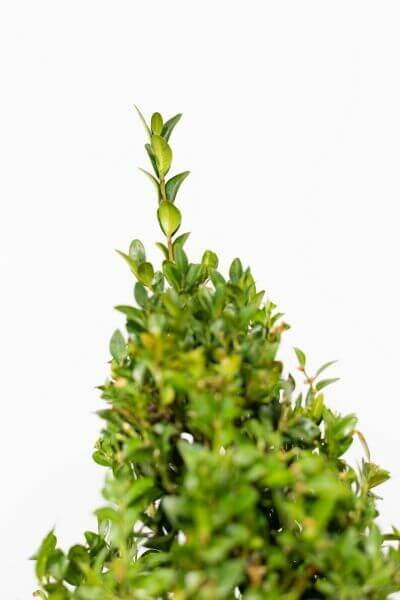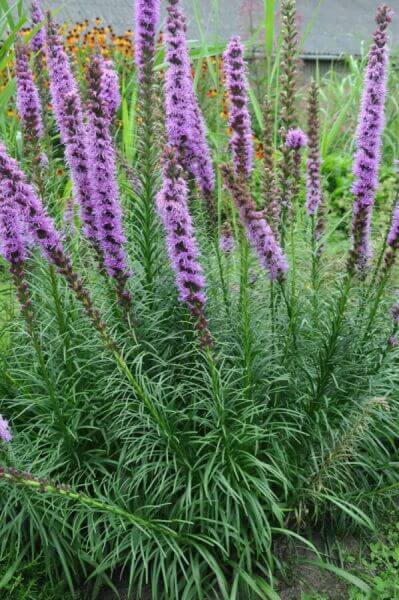Hedging Plants For Attractive Borders
Improve your garden's attraction with rich hedge varieties such as Yew (Taxus), Thuja, Laurel, Photinia, and Bamboo, celebrated for their structural stability and environmental advantages.
Yew and Thuja supply evergreen coverage and winter season durability, while Laurel uses rapid development and broad, aromatic leaves.
Photinia adds seasonal appeal with its lively red foliage, and Bamboo lends a low-maintenance, tranquil atmosphere.
These hedges improve air quality, minimize noise, and produce tranquil, personal areas.
Proper planting, spacing, and maintenance ensure energetic development and ecological harmony.
Check out how these lavish varieties can elevate your garden's charm and wellness.
Secret Takeaways
Transform Your Garden With Lush Hedge Varieties
- Select Yew for its dense, evergreen development and unequaled longevity.
- Choose Laurel for its fast development and broad leaves, making sure fast privacy.
- Choose Photinia for its vibrant seasonal foliage, which turns a striking dark red.
- Make use of Bamboo for a low-maintenance, winter-hardy hedge with visual appeal.
- Space plants 2-3 per meter and prune regularly for optimal growth and health.
Popular Hedge Plants
When transforming a garden with rich hedge ranges, it's vital to think about popular hedge plants such as Yew, Thuja, Laurel, and Photinia due to their special characteristics and benefits.
Yew (Taxus) is extremely esteemed for its durability and thick, green development, making it a prime option for enduring landscapes.
Thuja is kept in mind for its evergreen foliage and robust winter season resilience.
Photinia adds seasonal vibrancy with red leaves that darken in time, creating dynamic visual appeal.
Laurel offers rapid development and aromatic, broad leaves, perfect for fast personal privacy.
In Addition, Bamboo is an exceptional option for ambiance, providing a low-maintenance, winter-hardy option that enhances the garden's visual with its classy, swaying walking canes.
These selections cater to a variety of horticultural requirements and choices.
Benefits of Garden Hedges
Garden hedges offer a multitude of advantages, making them a valuable addition to any landscape. These natural barriers are affordable to implement and offer considerable wind protection, enhancing air circulation and adding to sound decrease. The dense foliage of hedges like Thuja and Beech ensures privacy by blocking presence, creating a secluded and tranquil environment.
Hedges likewise play an important role in microclimate guideline, offering a stable environment that cultivates plant growth and reduces temperature changes. Their intricate leaf structures filter toxins, improving air quality and contributing to a healthier garden community.
Moreover, hedges master noise decrease, absorbing and deflecting acoustic waves to lower ambient sound levels. This dual functionality of supplying both visual and acoustic personal privacy enhances the total tranquility and visual appeal of any garden.
Planting and Maintenance Tips
For a successful hedge, careful preparation of the planting area is essential. Make sure the soil has appropriate pH and drain to support strong root development.
Area the plants properly for the chosen types. Water the hedge frequently during its preliminary development phase, adjusting as required with seasonal modifications.
Implement a methodical bug control and disease avoidance strategy, using organic or chemical treatments when essential. Routinely inspect for aphids, mites, and fungal infections.
Apply mulch to keep wetness and reduce weeds. Seasonal pruning promotes dense growth and air flow, necessary for plant health.
Following these standards will help you cultivate a vibrant, well-kept hedge that boosts the appeal of your garden.
Spacing and Cutting Guidelines
Spacing and Trimming Guidelines
Appropriate spacing and cutting are vital for cultivating healthy, aesthetically appealing hedges. Appropriate spacing makes sure each plant gets enough nutrients, light, and air flow.
Follow these standards for optimal hedge maintenance:
- Spacing: Position hedge plants 2-3 plants per meter to encourage robust growth.
- Pruning Techniques: Regular pruning is important for maintaining desired hedge height and shape. Trim new growth in summer and cut back older wood during winter.
- Seasonal Care: Adjust trimming approaches and schedules according to seasonal requirements to make sure plant health.
- Hedge Height: Frequently screen and trim to maintain the wanted hedge height and attain consistent aesthetics.
Sticking to these steps will ensure your hedge grows, enhancing both the appeal and performance of your garden.
Selecting the Right Hedge
Selecting the Right Hedge
Selecting the proper hedge involves evaluating aspects such as mature height, foliage density, and environmental strength. Successful hedge plant choice requires understanding each types' growth attributes and site-specific versatility.
For example, Yew (Taxus) uses outstanding longevity and dense development, while Thuja is notable for its winter season durability. Additionally, thinking about maintenance requirements is vital; fast-growing species like Laurel or Privet need regular cutting, whereas low-maintenance choices like Bamboo or Ivy might be preferable for those looking for minimal upkeep.
Ecological elements such as soil type, light schedule, and moisture conditions should likewise guide the selection procedure. This careful technique ensures the selected hedges will grow, offering both visual and functional advantages to the garden landscape.
Delivery and Planting Suggestions
To ensure your hedge plants flourish, they must be delivered by specialized couriers and planted quickly upon arrival.
Follow these necessary steps for successful planting:
- Soil Preparation: Enhance the soil with organic matter to improve drain and nutrient material.
- Planting Depth: Create a trench twice the width and equal to the depth of the root ball.
- Watering Methods: Water completely after planting, keeping the soil regularly moist but not saturated.
- Mulching: Use a layer of mulch to maintain wetness and reduce weeds.
Customer Support and Service
Provided the important function of prompt help in horticultural pursuits, our consumer assistance group is available six days a week through telephone, email, and social media to offer professional guidance and quickly attend to any issues. Their commitment to fast reaction times guarantees client complete satisfaction by fixing inquiries associated with plant health, ideal planting techniques, and maintenance schedules.

Within 48 hours
Social network
This detailed assistance system, reinforced by an outstanding 9.3/ 10 client ranking, highlights our dedication to enhancing the gardening experience for each customer.
Regularly Asked Concerns
How Long Does It Consider Hedge Plants to Develop?
Hedge plants usually require one to three years to become completely developed, with the precise period differing by types and growing conditions.
Reliable care during this critical period is important for robust growth. Consistent watering, alert weed control, and appropriate fertilizer application are essential in promoting strong root development.
For example, fast-growing species like Laurel may establish more quickly, while slower-growing ranges such as Yew may take longer. Persistent upkeep accelerates the establishment process, leading to healthy and thick hedges.
What Are the very best Hedge Plants for Privacy?
The question of the very best hedge plants for personal privacy involves evaluating evergreen and deciduous options.
Evergreen hedges like Thuja, Laurel, and Cypress supply year-round protection, guaranteeing continuous personal privacy.
On the other hand, deciduous hedges such as Beech offer seasonal privacy, shedding leaves in cooler months.
Key upkeep pointers for privacy hedges include routine trimming, fertilizing in spring, and correct spacing-- usually 2 to 3 plants per meter.
Furthermore, consistent watering and persistent weed removal are vital for promoting healthy, dense growth.
Can Hedge Plants Draw In Wildlife to My Garden?
Yes, hedge plants can bring in wildlife to your garden by providing vital benefits like shelter, food, and nesting websites, thus boosting local biodiversity. Yew, holly, and laurel are outstanding for attracting birds, while ivy supports a variety of pests.
However, it is essential to note that there are some downsides, such as increased maintenance to handle pests and regular maintenance. Carefully picking and preserving hedge ranges can help balance these advantages and drawbacks, ultimately promoting a sustainable and vibrant community in your garden.
Exist Any Flowering Hedge Plants Available?
Yes, there are flowering hedge plants offered that can enhance the charm of your garden.
For instance, Elaeagnus, also referred to as Olive Willow, produces aromatic white flowers in the fall, including a touch of sophistication.
Photinia, another popular choice, showcases vibrant red leaves that develop into an abundant green, developing a vibrant visual effect throughout the seasons.
To ensure these plants flourish, it's vital to practice correct pruning methods and seasonal upkeep, such as trimming new growth in the summertime and cutting back in the winter season.
These procedures will assist maintain the health and aesthetic appeal of your flowering hedges.
How Do I Prevent Insects in My Hedge Plants?
To avoid insects in hedge plants, utilize natural bug control approaches and keep appropriate hedge care. Present helpful pests like ladybugs, which victimize harmful pests, to create a balanced ecosystem.
Routinely check your hedges for indications of problem and without delay get rid of any afflicted parts to avoid the spread. Guarantee the health of your hedges by applying balanced fertilizers and supplying appropriate water.
Make use of mulching to keep soil moisture and proper spacing to lower plant tension and promote robust development. These practices collectively assist in minimizing bug problems and preserving a healthy hedge.
Conclusion
In hedging plants essence, choosing the ideal hedge ranges such as Yew, Thuja, and Laurel can change any garden into a serene sanctuary. These plants offer year-round greenery, boost aesthetic appeal, and offer useful benefits like sound decrease and wind protection.
Correct planting methods, accurate spacing, constant watering, and seasonal trimming are vital for optimum growth.
Trustworthy delivery services and skilled client assistance guarantee a seamless experience from purchase to planting, making it easier than ever to elevate your outside space.
Garden hedges use a wide range of advantages, making them a valuable addition to any landscape. These natural barriers are cost-efficient to execute and supply considerable wind defense, improving air blood circulation and contributing to noise decrease. The thick foliage of hedges like Thuja and Beech guarantees personal privacy by obstructing presence, creating a tranquil and remote environment.

Pruning Methods: Regular pruning is essential for keeping preferred hedge height and shape. Trim brand-new growth in summer and cut back older wood throughout winter.